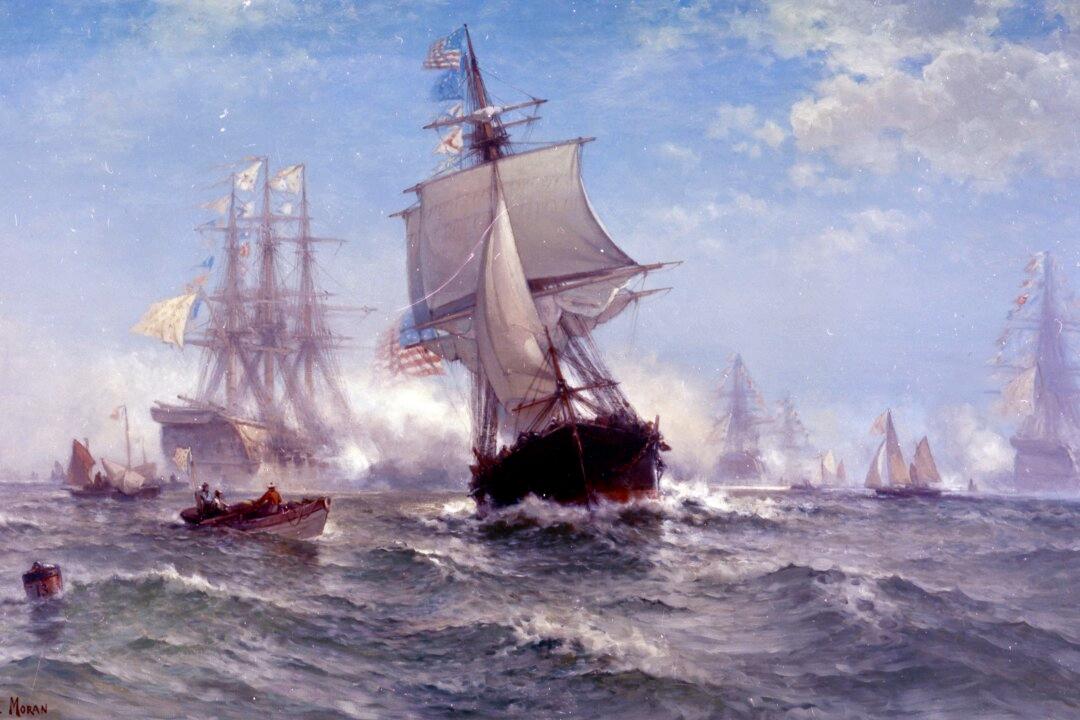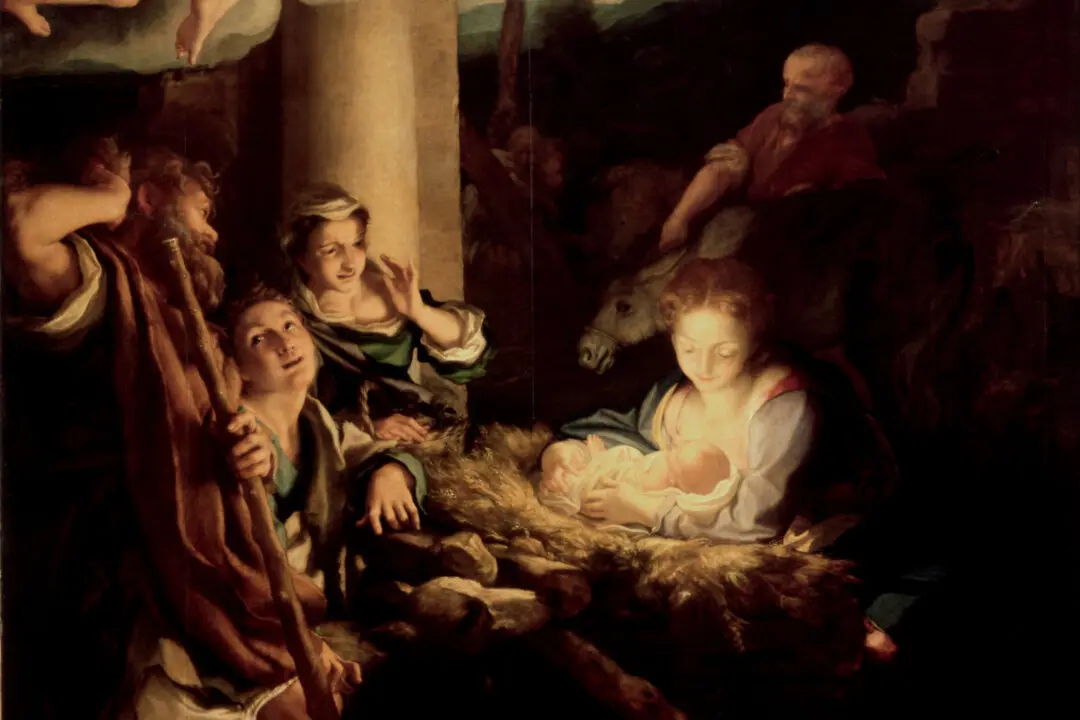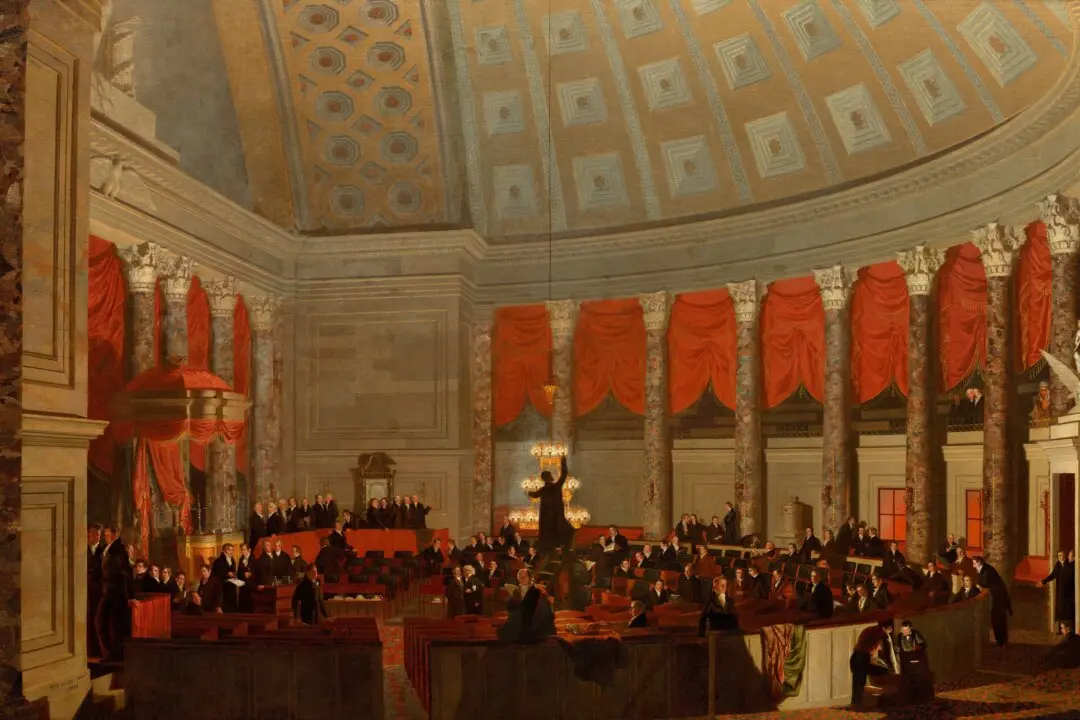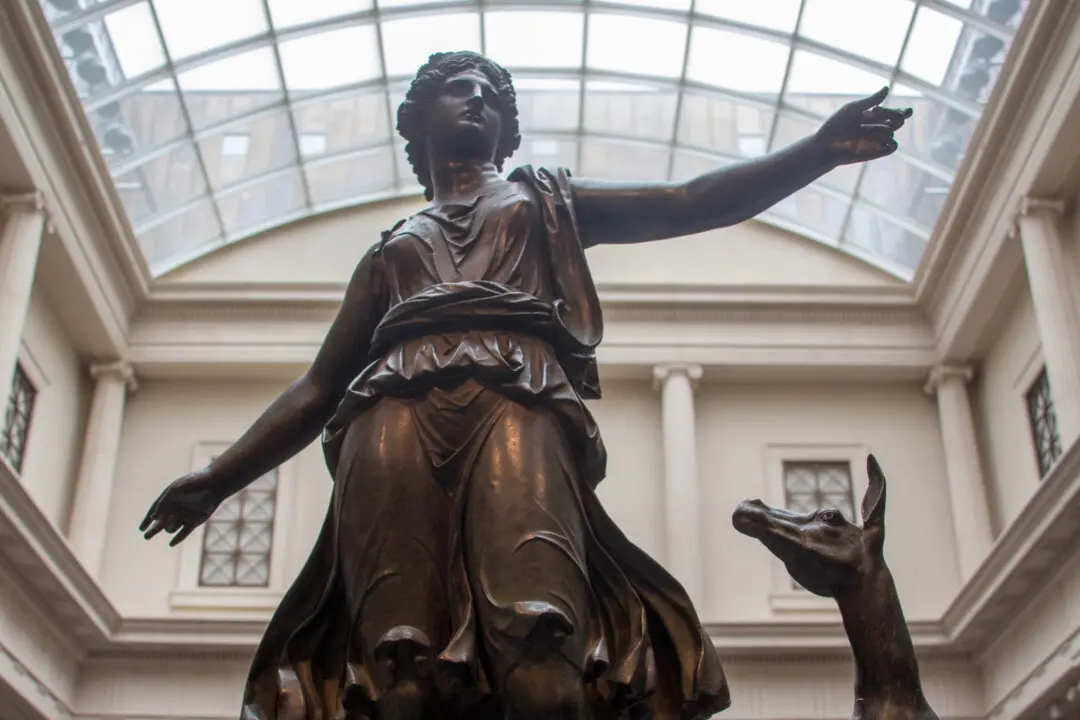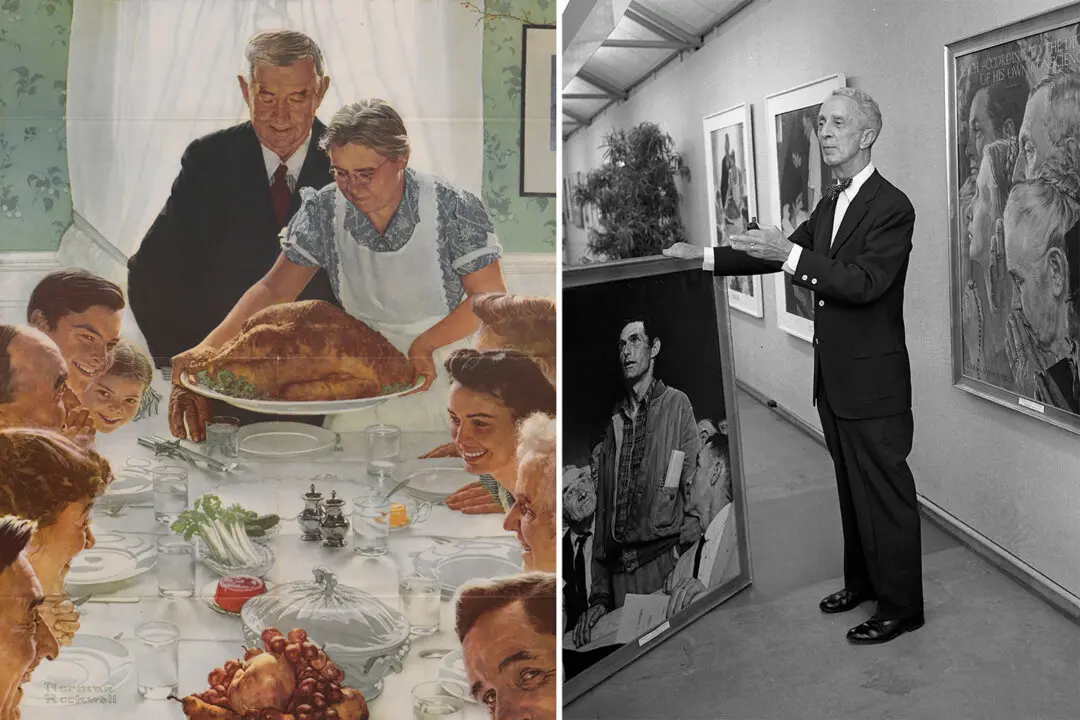The high seas have always played a significant role in America’s history, from its discovery and founding as a new nation to its enduring military might. In the late 19th century, the country’s key maritime events were memorialized in a series of imaginative and bold paintings by the eminent seascape painter Edward Moran. Each artwork in “The Edward Moran Series of Historical Paintings Representing Important Epochs in the Maritime History of the United States,” depicts one of 13 different scenes. Some incidents are drawn from the distant past, while other episodes are contemporaneous to Moran’s lifetime.
Moran loved the sea with a great passion, which may stem from his childhood spent in a maritime region. His Romanticism vision of nature is infused in every work in this series, elevating the realistic details he painstakingly researched and rendered into heroically poetic canvases.

